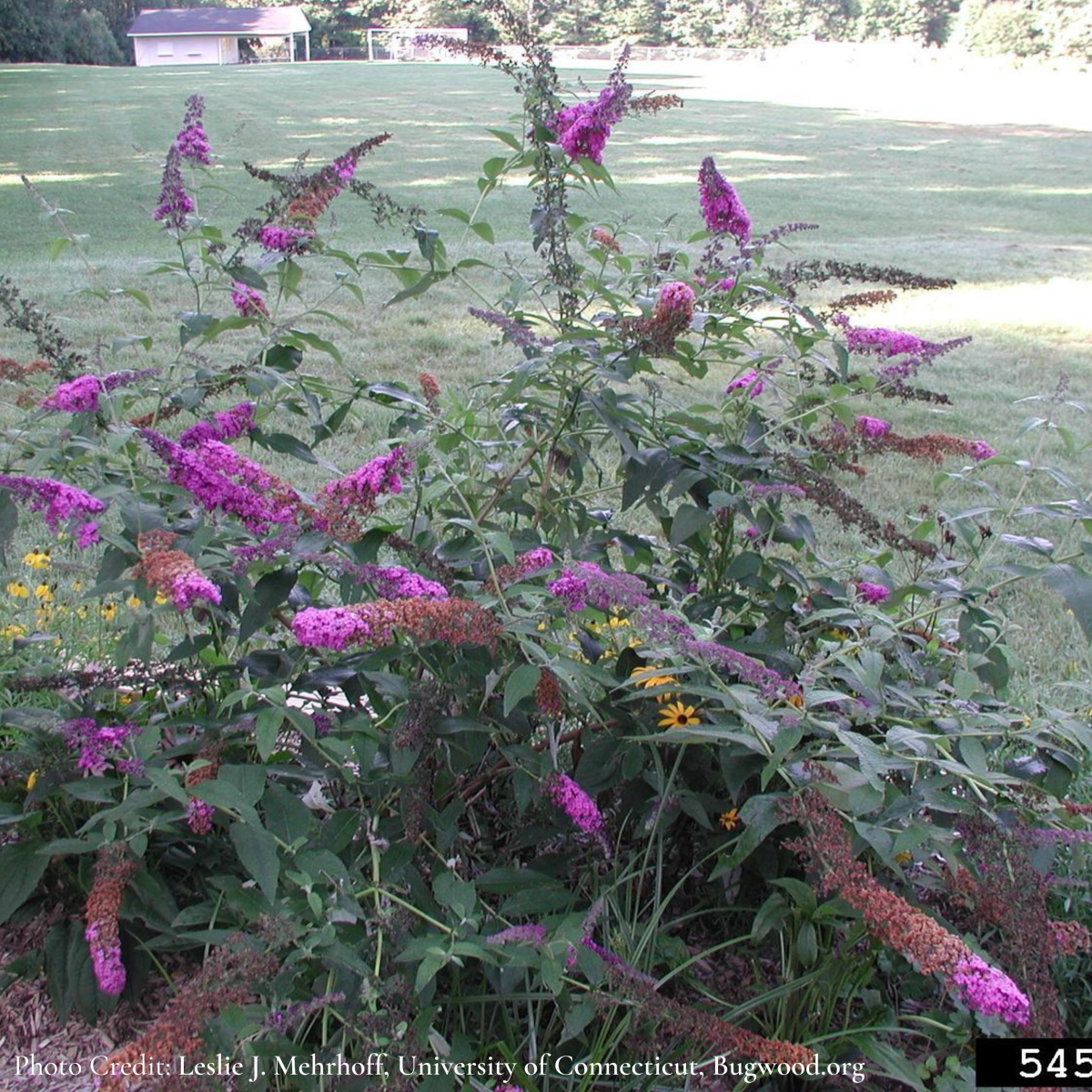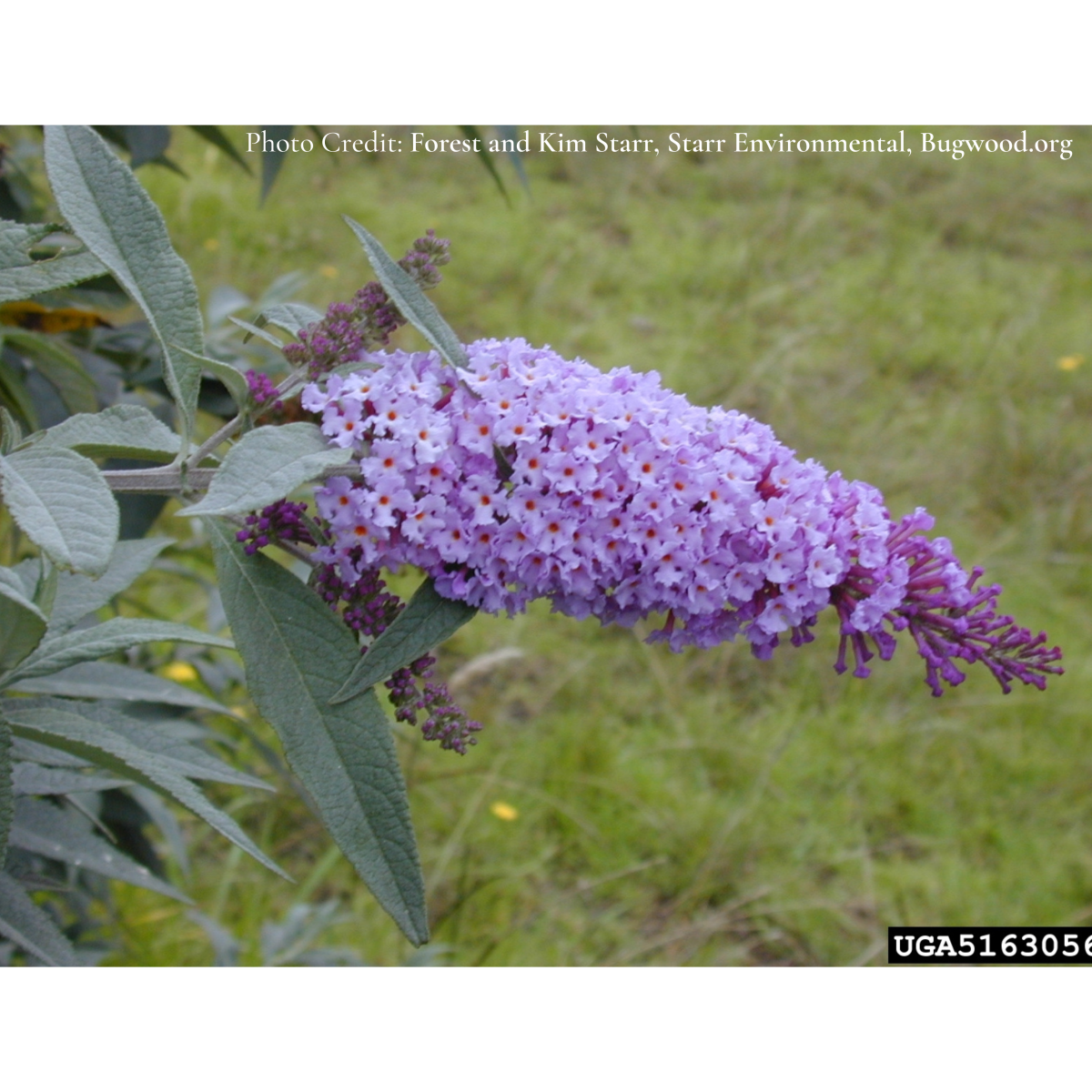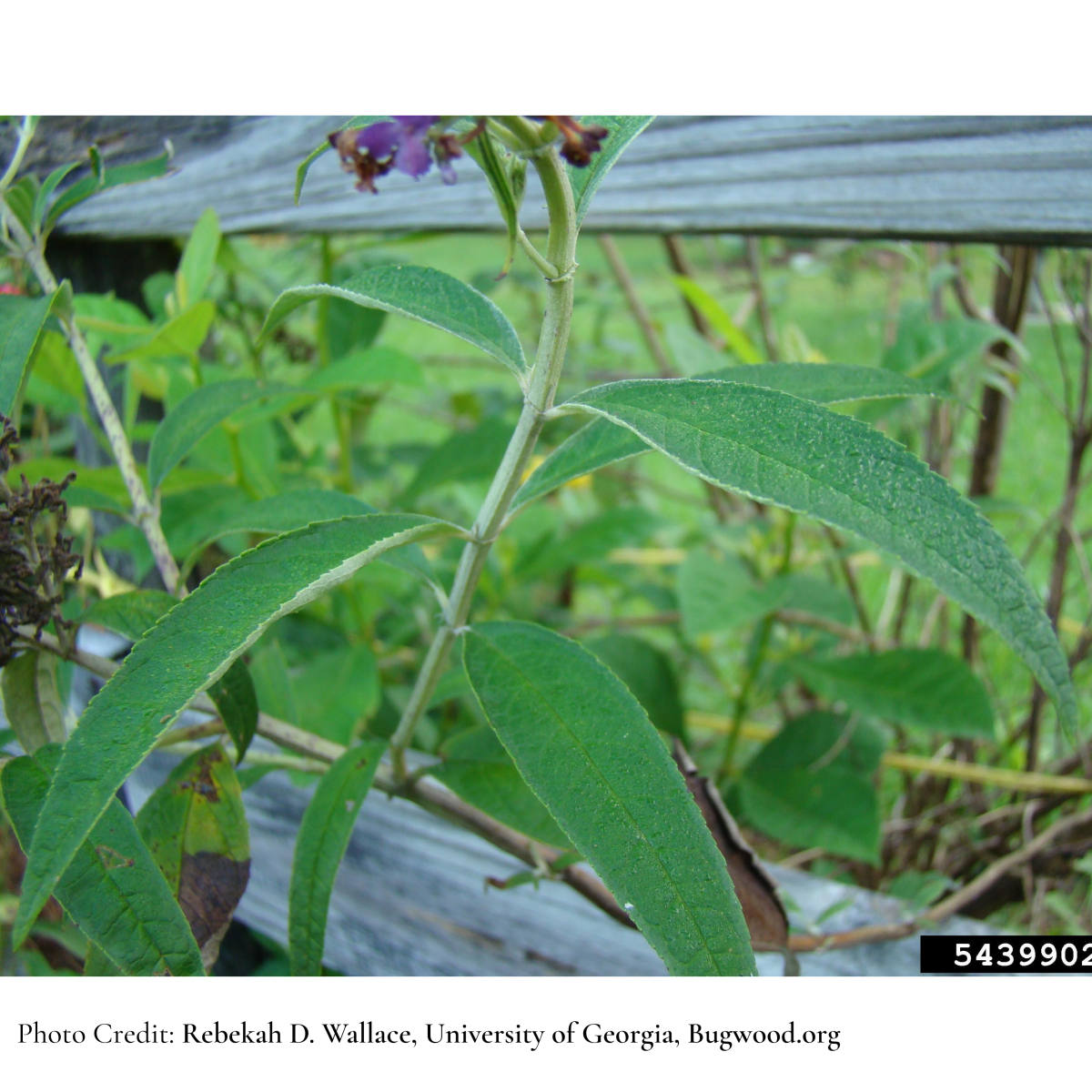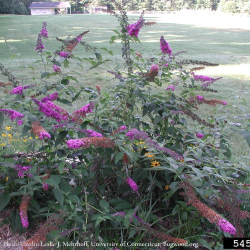
Priority: Prevent
General: A deciduous shrub planted to attract butterflies.
Height: 1 – 5 meters tall.
Flowers: Flowers are often pink but also come in white, purple, orange, red & blue. They are cone-shaped clusters of flowers with 4 petals. They are found at the end of branches.
Leaves/Stems: Branched, hairy stems that reach up to 5 meters. Leaves are arranged on branches opposite to each other. They are egg-shaped to lance-shaped, 3 – 25 cm long, saw-toothed or smooth. Leaves are grey & wooly-hairy beneath; green above.
Root: Fibrous root system.
Orange-Eye Butterflybush
Summer Lilac
California Lilac (Ceanothus spp.) Leaves are smaller & shiny. Lilacs bloom in the middle of spring; Butterfly Bush blooms June – September.
Meyer Lilac (Syringa meyeri) Leaves are smaller with slightly waxy margins. Lilacs bloom in the Spring.
Where did it come from? China & Japan.
Where does it grow here? In BC, it grows in the Fraser Valley & the Sea to Sky. It is on the LRISS ‘Prevent’ list but is likely in local gardens on private land. Butterfly Bush can grow in moist or dry areas. It is common on disturbed or rocky riverbanks at lower elevations.
Reproduction: Spreads by seed and vegetatively. It can sprout from rootstock, broken branches or stem segments.
When does it grow, flower & seed? Flowers mid-July to mid-September.
Spreads By: Seeds are dispersed by wind or water. Can also grow from cut parts. It can spread through contaminated soil as well as equipment.
Plant Type: Perennial shrub.
- Forms dense thickets that exclude all other plants & displace native vegetation.
- Decreases biodiversity and habitat for butterflies.
- Flowers may be a nectar source for butterflies, however, there is no North American caterpillar that can feed on the leaves. This disrupts the butterfly life cycle.
- Difficult to remove because it re-sprouts readily.
- Review your property regularly for this species.
- Treatment Remove from gardens. Dead-head all flowers before they go to seed. Cut plants at the base & dig-up the stump or cover it with a thick plastic bag or mulch to prevent regeneration. Remove new shoots. Do not leave stems on the ground, or they may root.
- Cover bare patches or disturbed soil by planting or seeding with non-invasives.
- Check areas where you have removed invasives for any new plants that year and in future growing seasons.
- Dispose of invasive plants responsibly. Bag them for disposal at the local landfill. Composting and burning are not recommended.
- Contact LRISS for specific treatment recommendations.
Eflora website.
Fraser Valley Invasive Species Society website.
Sea to Sky Invasive Species Council website.
Washington Invasive Species Council website.
Photo Gallery




